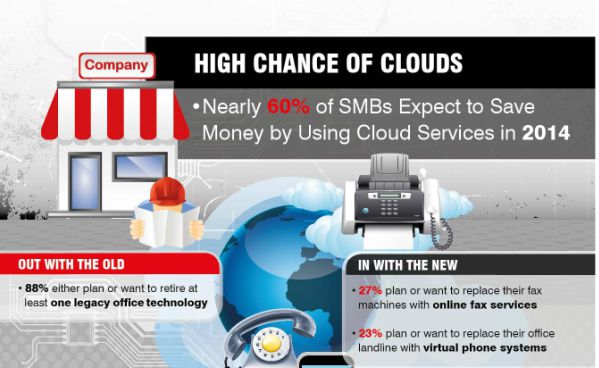Organizations are the most powerful force of change on the planet — yet they’re held back by outdated operating models.
To become a proper XXIst century organization, in tune with the current values of our time, one should try to find and experiment with alternatives to organization/management. Over this little guide, we will explore various alternatives of self-management.
Part 2 of the guide, describes the example of a French company, FAVI, which experiments with self-management since 1983. FAVI serves as the introductory case study to the framework of Teal Organizations, which will be covered on part 3.
In the french region of Picardy, there is a company that will celebrate its 60th birthday this year. FAVI is a family owned brass foundry company, that was created in 1957. It is, as well, an example of a company which has fully embraced self-management… for more than 3 decades, due to the effort of its CEO, Jean-François Zobrist.
In 1983, Jean-François Zobrist was appointed CEO of FAVI, and within 3 years, he transformed it into a highly successful, self-managing organization. In a market that has been steamrolled by Chinese competition, FAVI is the only European producer standing.
It generates double digits margins and commands a 50% market share in automotive gearbox forks in Europe. Today the factory has over 500 employees who are happy! The company pays salaries well above average and hasn’t had a single order delivered late in over 25 years… nor a strike.
How did it all begin?
Zobrist likes to remind people that what he did with FAVi, was nothing new… He was following the steps of many others, who, during the sixties, were experimenting with self-management and the abolishment of hierarchy. It all began, he says, with asking questions: what were the hidden assumptions behind traditional (i.e. hierarchical) management? He discovered that management considered that men and women were:
- Thieves because everything is locked up in storage rooms.
- Lazy, as their working time is controlled and every late showing is punished by somebody.
- Not reliable, because all their production is controlled by somebody else.
- Not intelligent, as a “manufacturing engineering” department does all the thinking.
Zobrist and his colleagues defined three new assumptions, which came to become FAVI´s mantras:
-
- People are systematically considered to be good, ie, responsible, self-motivated, intelligent)
- Happiness is key for proper performance. (And to be happy, one needs to be motivated, which is intimately intertwined with being responsible.
- Value is created on the shop floor. (Shop floor operators craft the products; the CEO and staff at best serve to support them, at worst are costly distractions
FAVI´s conclusions are strikingly similar to the ones of Theory X and Theory Y. This was a theory developed by Douglas McGregor in the 1960s, when he was a professor at MIT. He stated that managers hold one of two sets of beliefs concerning employees: some think employees are inherently lazy and will avoid work whenever possible (Theory X); others think workers can be ambitious, self-motivated, and exercise self-control (Theory Y).
Which set of assumptions is true?
McGregor take on the assumptions, was insightful in its simplicity: both are true. You reap what you sew! If you view people with mistrust (Theory X) and subject them to all sorts of controls, rules, and punishments, they will comply with the punishment reward system. If you invest on practices based on trust, they will return your trust with responsible behavior.
What is the face of self-management at FAVI
30 years ago, Zibrost got rid of the clock-in, clock-out system, including fines and punishment for those who arrived to work late, and to the dismay of many something incredible happened: productivity augmented.
Furthermore, rather than leaving the moment their shift ended – often in the middle of a project – workers tended to stay 30 minutes extra. Zobrist also introduced the concept of mini factories of 15 to 35 people, which was revolutionary. How this works is that most of the teams are dedicated to a specific customer (the Volkswagen team, the Audi team, the Volvo team, etc.). Each team self-organizes itself; there is no middle management, and the staff functions have nearly all disappeared.
How a client order makes its way through the system best illustrates how the new model works. Previously, when an order came in it would arrive at the sales department. Then planning would give sales a predicted shipping date and allocate machine times, scheduling would make the detailed planning of what would need to be produced by when on which machine. Then HR would allocate workers to the machines, and workers simply did what they were told.
At FAVI the process is very different.
There are no more departments – instead the roles are divided and performed by each team. Every week in a short meeting the account manager for the BMW team, for example, shares with the team the order that the carmaker placed. Planning happens on the spot in the meeting, and the team jointly agrees on the shipment date. Decisions occur through team discussions.
At FAVI workers are organized in their own mini-factories of between 15 to 35 peopleAccount managers don’t report to heads of sales, they report to their own teams. There is no sales targets, but a strong motivation to serve their clients well and to maintain or increase the number of jobs the factory can provide. This is particularly important as the shop floor operators have now a strong identity and voice.
There is still need for coordination, particularly across teams, but the process is once more, organic. Maybe customer orders fluctuate and one team needs additional workers to complete the job.
At FAVI a group composed of one designated person from each team comes together for a few minutes – they quickly discuss which teams are over or understaffed; back in their teams they ask for volunteers to switch teams for a shift or two. Things happen organically on a voluntary basis; nobody is being allocated to a team by a higher authority. Workers even come to work on Sundays, on a voluntary basis.
Trust, a core value of self-management
Self-managing organizations operate from a completely different standpoint about human nature. If most organizations still hold deeply ingrained assumptions about people and work that are based on fear, self-managing organizations value trust. If the two mindsets (fear versus trust) are clearly articulated, people become empowered.
They know how to identify when certain rules and operations result from one or the other. The risk that fear-based control mechanisms will return one day, disappears, as everyone is confident that if something appears that doesn’t correspond to the core purpose of the organization, someone will speak out.
FAVI, for many years, had the practice of starting every meeting with all participants sharing a brief story of someone they had recently thanked or congratulated. The practice had a beautiful effect on the meeting: it created a mood of possibility, gratitude, celebration, and trust in other people’s goodness and talents.
Another interesting practice at FAVI around meetings is that all upcoming meetings are listed on the intranet so that anybody can invite himself or herself into any meeting to share a concern or an idea. Everyone can be in the known of what happens around the company, so no one feels excluded.
FAVI, an example of a Teal Organization
FAVI is cited frequently as an example of a TEAL Organization, but not everyone knows what this means. The concept was introduced by Frederic Laloux in his book Reinventing Organizations. In his book Laloux describes a new type of companies and organizations emerging from all corners of the world, that are operating from a new, more advanced degree of consciousness. What characterizes these organizations are 3 core principles: Wholeness, evolutionary purpose, and self-management.
Teal Organizations will be the subject of part three of this guide, to be posted tomorrow.

Maria Fonseca is the Editor and Infographic Artist for IntelligentHQ. She is also a thought leader writing about social innovation, sharing economy, social business, and the commons. Aside her work for IntelligentHQ, Maria Fonseca is a visual artist and filmmaker that has exhibited widely in international events such as Manifesta 5, Sao Paulo Biennial, Photo Espana, Moderna Museet in Stockholm, Joshibi University and many others. She concluded her PhD on essayistic filmmaking , taken at University of Westminster in London and is preparing her post doc that will explore the links between creativity and the sharing economy.
























